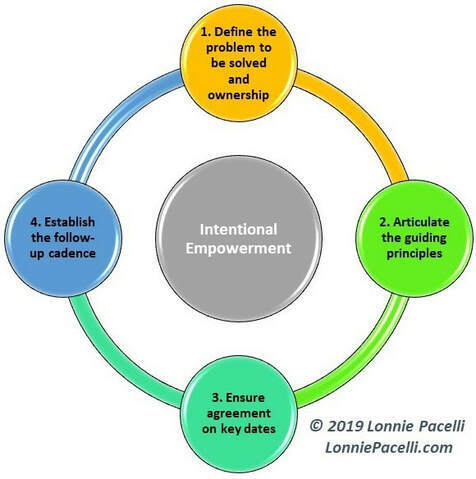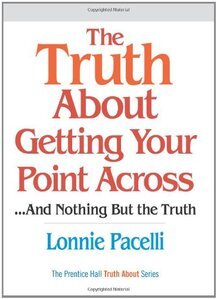Lonnie Pacelli's Blog, page 29
February 19, 2022
Lie About Your Credentials, Kill Your Career
Excerpted from The Truth about Getting Your Point Across…and Nothing But the Truth
 Notre Dame football coach George O’Leary resigned five days after being hired, admitting he lied about his academic and athletic background. O'Leary claimed to have a master's degree in education and to have played college football for three years, but checks into his background showed it wasn't true.
Notre Dame football coach George O’Leary resigned five days after being hired, admitting he lied about his academic and athletic background. O'Leary claimed to have a master's degree in education and to have played college football for three years, but checks into his background showed it wasn't true.
Veritas CFO Kenneth Lonchar was fired because he claimed he had a Masters of Business Administration from Stanford University. Further research showed that he did not hold an MBA from any school. Ironically, Veritas in Latin means “truth”.
Joseph Ellis, a Pulitzer Prize-winning historian, was suspended for a year from Mount Holyoke College for lying about serving in the Vietnam War.
Each of these examples, while high-profile and extreme, all fell from the same tree; people lying on their resumes to help influence an employer to hire them. Aside from the fact that each of the above cases resulted in job loss or suspension; they also all endured the humiliation of being publicly labeled as a liar. Not the best way to be remembered.
Resumes by nature are meant to inform, impress, and inspire a potential employer and get the employer to want to talk to you. Most employers only spend about twenty seconds looking at each resume they receive, and worse, most employers view the information contained on resumes as a way to weed out applicants . Putting your best foot forward to present a concise, compelling case for why you should be hired is crucial to getting you invited to the party.
Throughout my career I’ve interviewed hundreds of candidates for a wide variety of jobs. Many of the candidates that I’ve interviewed were upstanding, honest, and candid and went on to have successful careers at my company. Of those who didn’t get hired, many lost out because of boastful claims made on their resume that they were unable to substantiate during the interview process. As an interviewer, I intentionally focused on claims that were exceptional to truly understand how they did it and to see if the claim was authentic or bogus. Authentic claims went a long way toward recommending a “hire” decision; bogus claims got an automatic “no hire” without further consideration. Let me put this as plainly as I can. Lies about your credentials can permanently kill your career. Putting bogus, or even mildly aggressive, claims on your resume can hurt you in a couple of ways. The first question that arises pertains to competence. Bogus claims will cause a potential employer to question whether you possess the skills required to perform the job. The second question, which is far more important for me, pertains to integrity. If a candidate is willing to stretch the truth on a single fact on his or her resume, what else is he or she not being truthful about? Having your integrity questioned by the interviewer is pretty much your one-way ticket home.
The lesson learned here is simple; any lie, even the littlest of white lies, has no place on a resume and will come back to bite you. Assume that each and every word on your resume is going to be checked, questioned, and scrutinized during an interview and verification. Be able to substantiate facts, metrics, and credentials with backup information and provide references where necessary.
Having said all this, do your best to sell yourself on your resume and dazzle prospective employers with your accomplishments, credentials, and experience. Wow them during your twenty seconds of fame. Just make sure that what they see is you and not some figment of your imagination.
Excerpted from The Truth about Getting Your Point Across…and Nothing But the Truth
Lonnie Pacelli
Keynote Speaker | Board Director | Autism Advocate | Author | Project Management Expert | Microsoft/Accenture Veteran
See his books on Amazon.
 Notre Dame football coach George O’Leary resigned five days after being hired, admitting he lied about his academic and athletic background. O'Leary claimed to have a master's degree in education and to have played college football for three years, but checks into his background showed it wasn't true.
Notre Dame football coach George O’Leary resigned five days after being hired, admitting he lied about his academic and athletic background. O'Leary claimed to have a master's degree in education and to have played college football for three years, but checks into his background showed it wasn't true. Veritas CFO Kenneth Lonchar was fired because he claimed he had a Masters of Business Administration from Stanford University. Further research showed that he did not hold an MBA from any school. Ironically, Veritas in Latin means “truth”.
Joseph Ellis, a Pulitzer Prize-winning historian, was suspended for a year from Mount Holyoke College for lying about serving in the Vietnam War.
Each of these examples, while high-profile and extreme, all fell from the same tree; people lying on their resumes to help influence an employer to hire them. Aside from the fact that each of the above cases resulted in job loss or suspension; they also all endured the humiliation of being publicly labeled as a liar. Not the best way to be remembered.
Resumes by nature are meant to inform, impress, and inspire a potential employer and get the employer to want to talk to you. Most employers only spend about twenty seconds looking at each resume they receive, and worse, most employers view the information contained on resumes as a way to weed out applicants . Putting your best foot forward to present a concise, compelling case for why you should be hired is crucial to getting you invited to the party.
Throughout my career I’ve interviewed hundreds of candidates for a wide variety of jobs. Many of the candidates that I’ve interviewed were upstanding, honest, and candid and went on to have successful careers at my company. Of those who didn’t get hired, many lost out because of boastful claims made on their resume that they were unable to substantiate during the interview process. As an interviewer, I intentionally focused on claims that were exceptional to truly understand how they did it and to see if the claim was authentic or bogus. Authentic claims went a long way toward recommending a “hire” decision; bogus claims got an automatic “no hire” without further consideration. Let me put this as plainly as I can. Lies about your credentials can permanently kill your career. Putting bogus, or even mildly aggressive, claims on your resume can hurt you in a couple of ways. The first question that arises pertains to competence. Bogus claims will cause a potential employer to question whether you possess the skills required to perform the job. The second question, which is far more important for me, pertains to integrity. If a candidate is willing to stretch the truth on a single fact on his or her resume, what else is he or she not being truthful about? Having your integrity questioned by the interviewer is pretty much your one-way ticket home.
The lesson learned here is simple; any lie, even the littlest of white lies, has no place on a resume and will come back to bite you. Assume that each and every word on your resume is going to be checked, questioned, and scrutinized during an interview and verification. Be able to substantiate facts, metrics, and credentials with backup information and provide references where necessary.
Having said all this, do your best to sell yourself on your resume and dazzle prospective employers with your accomplishments, credentials, and experience. Wow them during your twenty seconds of fame. Just make sure that what they see is you and not some figment of your imagination.
Excerpted from The Truth about Getting Your Point Across…and Nothing But the Truth
Lonnie Pacelli
Keynote Speaker | Board Director | Autism Advocate | Author | Project Management Expert | Microsoft/Accenture Veteran
See his books on Amazon.
Published on February 19, 2022 02:45
February 14, 2022
Nine Project Management Lessons I Learned the Hard Way
Lonnie Pacelli
Keynote Speaker | Board Director | Autism Advocate | Author | Project Management Expert | Microsoft/Accenture Veteran
See his books on Amazon.
Published on February 14, 2022 00:00
February 13, 2022
Free 2/16-17: 16 Tips to Become a Best-in-Class Mentor
 Free 2/16-17: 16 Tips to Become a Best-in-Class Mentor
Free 2/16-17: 16 Tips to Become a Best-in-Class MentorGet it at https://amzn.to/2DPYAET
#freebook #teamwork #leadership #kindle #kindlefire #ebooks #ebook #Kindlefreebooks #Kindledeals #FREE #mustread #goodreads #greatreads #freebie #freebies #kindlebook #ad #mentor
Published on February 13, 2022 00:00
February 4, 2022
Free 2/9-10: 15 Tips to Keep Your Business on Track
 Free 2/9-10: 15 Tips to Keep Your Business on Track
Free 2/9-10: 15 Tips to Keep Your Business on TrackGet it at https://amzn.to/2FxF3L0
#freebook #teamwork #leadership #kindle #kindlefire #ebooks #ebook #Kindlefreebooks #Kindledeals #FREE #mustread #goodreads #greatreads #freebie #freebies #kindlebook #ad #entrepreneur #startup
Published on February 04, 2022 02:48
Intentional Empowerment in Four Easy Steps
 Empowerment.
Empowerment.One of the most over-used, warmed-over leadership terms uttered daily. Leaders high and low espouse their expertise in empowering teams to deliver. Some are very good at it, fostering high-performance teams who deliver great results. Others, though, only think they are good at it but frustrate teams with micromanagement, apathy, vagueness, and randomization. Most anyone who has been around the block has seen both good and bad empowerment examples. As for me, I’ve not only seen it, I’ve committed both the good and bad. It took me years to understand that empowerment isn’t just about delegating tasks to be performed. True empowerment is about entrusting individuals with problems to be solved and supporting them in the process. A high-performance empowered team owns problems or missions and is supported by a leader who provides clarity, gives guidance, and resolves only those issues the team can’t resolve on their own. To put some meat on this, I like to think of empowerment as systematic, with four critical steps needed to ensure its success. I call this intentional empowerment .
 Step 1 – Define the problem to be solved and ownership
Step 1 – Define the problem to be solved and ownershipThe first step in intentional empowerment is the clear articulation of a problem statement. The size of the problem doesn’t matter, it can be something that will take hours, days, or months to solve. What matters is a clear understanding of the problem statement, as well as ownership of the problem statement and the resulting solution.
Here is a good example:We need to reduce our invoice processing costs by 15% to align with mandated cuts across the organization. I would like you to take point on creation and execution of a plan to achieve the 15% cost-reduction goal.And a bad one:Go develop process flows on our invoicing process so we can look for cost reductions.While process flows may be a necessary step, you as the leader have delegated an errand to someone else and retained control of the problem. The person will run the errand, give you process flows, then await your next instruction.
Step 2 – Articulate the guiding principles
Articulating guiding principles is about policy, legal, regulatory, or other guidelines which the solution needs to adhere to. Note this is not about telling the problem owner how to do something, it’s about ensuring the problem owner knows the boundaries that he or she needs to abide by in solving the problem.
Some good examples of guiding principles:All invoices must be paid within ten days to ensure we get a 2% trade discount.Any personnel hire/fire recommendations must be first discussed with HR and kept strictly confidentialEnsure the solution has the buy-in of the purchasing director.
And a couple of bad examples:Here is how you should go about solving the problem.Go talk to the purchasing director, interview her on what she thinks should be done, and tell me what she says.
Guiding principles aren’t about controlling how something gets done, they are about the problem owner knowing what latitude he or she has in solution definition.
Step 3 – Ensure agreement on key dates
Knowing when something needs to be done and any key interim milestone dates enables the problem owner to figure out tasks and resourcing needs to hit the dates. It’s crucial here to get crisp on a specific date, not an “ASAP,” “immediately,” or “yesterday” date. It’s important for the leader to have his or her key dates thought out to ensure alignment with the problem owner. A good example:We need the plan done by April 15 in time for our annual review with the VP with subsequent implementation complete by fiscal year start of July 1.
And bad ones:I need it yesterday.I need it ASAP.
It may be that a problem needs to be resolved urgently; if that’s the case then stress the urgency to the problem owner but put a date on it. Don’t leave the when up to interpretation.
Step 4 – Establish the follow-up cadence
Key to intentional empowerment is an agreed-upon and timely follow-up cadence that both the leader and problem owner understand and agree is appropriate. When done well, the leader and problem owner stay aligned on execution and can fulfill project “asks” on a timely basis. It also minimizes surprises and frantic rework when expectations aren’t met. Just as importantly, though, is the leader staying in his or her lane by serving as a resource for the problem owner. An impatient or meddling leader can start micro-managing or dictating how something should be done. The problem owner turns into errand runner, with the leader hijacking problem ownership. Empowerment gone bad.
The cadence frequency should be appropriate to the problem and its due date, whether it be monthly, weekly, daily, hourly, or some other increment. As a leader it’s important to work on the frequency right-sizing with the problem owner; too infrequent can communicate disinterest, too frequent can communicate distrust. Here is an example for a project with a due date of one month:Schedule 15 minutes each Friday for both of us to go through status, issues, risks, and any help-wanted requests.
For the same project here are a couple of bad examples:Check in with me every day to tell me what you’ve done and what you’re going to do.I’m very busy, just let me know when it’s done.
There’s no one-size-fits-all follow-up cadence, what’s important is that the cadence exists, and both the leader and problem owner agree it’s appropriate. Again, too-infrequent follow-up communicates disinterest, while too-frequent follow-up communicates distrust.
I want to leave you with one last thought. Empowerment is a privilege, not a right. Those who are empowered have to earn and keep the trust of their manager, peers, and employees. Ensure when you are empowering someone to solve a problem that you are doing so because you trust him/her, and that if the trust is breached the willingness to empower diminishes. With that being said, take the time to understand intentional empowerment and use it to create high-performance teams that deliver value to your organization.
See what Rosa Parks, Abraham Lincoln, Napoleon Bonaparte, Harriet Tubman, and Susan B. Anthony have to say about intentional empowerment in Behind Gold Doors: Five Legends Offer the Keys to Empowering Leadership.
Lonnie Pacelli
Keynote Speaker | Board Director | Autism Advocate | Author | Project Management Expert | Microsoft/Accenture Veteran
See his books on Amazon.
Published on February 04, 2022 02:48
January 28, 2022
Free 2/2-3: 14 Tips to Unify Your Team to Drive Results
 Free 2/2-3: 14 Tips to Unify Your Team to Drive Results
Free 2/2-3: 14 Tips to Unify Your Team to Drive ResultsGet it at https://amzn.to/2ToVs7r
#freebook #teamwork #leadership #kindle #kindlefire #ebooks #ebook #Kindlefreebooks #Kindledeals #FREE #mustread #goodreads #greatreads #freebie #freebies #kindlebook #teamwork #leadership #followership #planning
Published on January 28, 2022 02:40
Not Another Ice-Breaker! Team Building with a Purpose
 “We just don’t work as a team!” Janet, a group manager for a large insurance company, was complaining to Larry, her human resources consultant. “Everyone just seems to do their own thing, they don’t share information, don’t try to help each other, and don’t seem to care about anyone else’s problems. What we need is a team building offsite!” Janet and Larry decided to put together a two-day offsite for the team at a resort about two hours away from work. Janet wanted immediate focus on the problem so Larry worked double-time to put together the event to be held later in the month. Larry put together an agenda full of trust-building exercises, ice-breakers, and brainstorming sessions on how the team could work better together.On the first day of the offsite only about half of Janet’s team had shown up; the other half were working on a hot project that needed to be completed later in the week. The remaining team members politely participated in the team building exercises, but didn’t seem very interested in the activities as they felt too “squishy.” Because Janet wanted to focus the offsite on team building, there was no clearly stated business purpose for the event. The brainstorming sessions were good, but no tangible actions were taken down for the team to follow up on. In short, the offsite was met with a resounding thud from the team and was a dismal failure.
“We just don’t work as a team!” Janet, a group manager for a large insurance company, was complaining to Larry, her human resources consultant. “Everyone just seems to do their own thing, they don’t share information, don’t try to help each other, and don’t seem to care about anyone else’s problems. What we need is a team building offsite!” Janet and Larry decided to put together a two-day offsite for the team at a resort about two hours away from work. Janet wanted immediate focus on the problem so Larry worked double-time to put together the event to be held later in the month. Larry put together an agenda full of trust-building exercises, ice-breakers, and brainstorming sessions on how the team could work better together.On the first day of the offsite only about half of Janet’s team had shown up; the other half were working on a hot project that needed to be completed later in the week. The remaining team members politely participated in the team building exercises, but didn’t seem very interested in the activities as they felt too “squishy.” Because Janet wanted to focus the offsite on team building, there was no clearly stated business purpose for the event. The brainstorming sessions were good, but no tangible actions were taken down for the team to follow up on. In short, the offsite was met with a resounding thud from the team and was a dismal failure. To some, this may be a gross exaggeration; but to others, this closely resembles an offsite they attended or were responsible for planning. Offsites are a very effective means to getting the team focused on solving a business problem, defining a strategy, or creating a revolutionary way of doing things. A very key by-product of offsites, though, is the team-building that occurs while addressing business issue at hand. Done well, an offsite not only puts great minds together to address a business issue but it also builds better teams that work more effectively together and get more things done. Done poorly, an offsite will be viewed as a huge waste of time and will poorly reflect on you as a leader.
How can you ensure your offsites are successful at building teams and getting things done at the same time? Consider the following simple tips:
Have a clear purpose for the offsite – Define some clear business reason for having the offsite. Consider things such as developing strategic goals for the upcoming fiscal year, account planning for strategic customers, or generating solution alternatives for a key business problem. If you make the goal of the offsite “Team Building” then your team is likely to look at the offsite as a waste of time that will have no real business benefit. Do your team building under the guise of solving a problem or defining the future.
Balance work with play – All work and the offsite becomes too fatiguing. All play and it becomes a boondoggle. Balance your agenda with a combination of work sessions with some fun team-building events sprinkled in. Make sure the “play” events you define are something everyone can participate in and go beyond the overused catch-me-as-I-fall-backwards event. Better still, ask the team what types of things they’d like to do during playtime.
Provide plenty of time for networking – Give ample time during the day and evening for the team to have snacks, enjoy beverages, and just talk about whatever strikes them. Team building starts with building relationships, and building relationships starts with getting to know each other. Allow for networking time to be free and unscripted and let the team enjoy some casual conversation with each other.
Don’t hold the offsite during a crunch period – When you do hold your offsite, you don’t want your team members to be checking email every five minutes or constantly leaving to make important calls. Do your best to hold an offsite during a “slow” time in your business. As with most businesses, there will probably never be an optimal time to hold an offsite but do your best to avoid times when team members are already burning the midnight oil.
Make it an overnight event – Some of the best offsites I’ve held were those where the team ate dinner together, enjoyed a couple of drinks, and stayed up late discussing major business problems or brainstorming on a radically new strategy. These late night sessions were valuable in that team members put their heads together to address some problem or opportunity. More importantly, team members built relationships which provided an outstanding foundation for strong teams.
Don’t make the team work overtime to “make up” the time spent at the offsite – If you’re going to have an offsite, allow the team to move some of their other commitments out a few days so they don’t feel the pressure of needing to get their work done while at the offsite. The last thing you want is your team thinking about working late because of wasted time at a dumb offsite. Relax some of the deliverables and let the team focus on the offsite, not on what work isn’t getting done.
Put together a follow-up plan to continue the work from the offsite – One of the most frustrating things I’ve experienced with offsites was the lack of a follow-up plan to implement some of the great ideas which came out of the offsite. Put together an actionable follow-up plan with tasks, dates, and owners and you’ll keep the excitement going out of the offsite and will get some of the great ideas implemented. Neglect putting together a follow-up plan and you’ll have an offsite that the team sees as a waste of time.
Offsites can be a very effective means of getting things done and building outstanding teams at the same time. Just make sure to follow these simple steps and you’ll better ensure your next offsite is a huge success.Lonnie Pacelli
Keynote Speaker | Board Director | Autism Advocate | Author | Project Management Expert | Microsoft/Accenture Veteran
See his books on Amazon.
Published on January 28, 2022 02:40
January 22, 2022
Free 1/26-27: 12 Reasons Not to Start Your Own Small Business
 Free 1/26-27: 12 Reasons Not to Start Your Own Small Business
Free 1/26-27: 12 Reasons Not to Start Your Own Small BusinessGet it at: https://amzn.to/2OSqG36
#freebook #teamwork #leadership #kindle #kindlefire #ebooks #ebook #Kindlefreebooks #Kindledeals #FREE #mustread #goodreads #greatreads #freebie #freebies #kindlebook #ad #entrepreneur #startup
Published on January 22, 2022 02:33
Making sense of calendars in MS Project
 Since Microsoft Project's initial release in 1984 it has evolved into an incredibly powerful and sophisticated project management tool. One of those sophisticated features is calendars. As one of my heroes Spiderman says, "with great power comes great responsibility". As a project manager, you can exploit some of the cool capabilities with Microsoft Project calendars, but beware, you could really tie your shorts up in a knot if you start getting too fancy with project calendars. In addressing this topic, I want to start off by telling you what Microsoft Project help says about calendars then give you a few tips to help you avoid Project Manager hell when trying to develop a meaningful and realistic project schedule.
Since Microsoft Project's initial release in 1984 it has evolved into an incredibly powerful and sophisticated project management tool. One of those sophisticated features is calendars. As one of my heroes Spiderman says, "with great power comes great responsibility". As a project manager, you can exploit some of the cool capabilities with Microsoft Project calendars, but beware, you could really tie your shorts up in a knot if you start getting too fancy with project calendars. In addressing this topic, I want to start off by telling you what Microsoft Project help says about calendars then give you a few tips to help you avoid Project Manager hell when trying to develop a meaningful and realistic project schedule. There are four types of calendars in Microsoft Project: base calendars, project calendars, resource calendars, and task calendars. They are used to determine resource availability, how resources that are assigned to tasks are scheduled, and how tasks are scheduled. Project calendars and task calendars are used to schedule tasks, and if resources are assigned to tasks, resource calendars are used as well. You can modify these calendars to define the working days and hours for the whole project, for groups of resources, for individual resources, and for tasks. These calendars are distinct from the Calendar view, which shows the project schedule in a calendar format.
A base calendar is used as a template that the project calendar, resource calendars, or task calendars are based on. It defines the standard working and nonworking times for the project. It specifies the work hours for each work day, the work days for each week, and any exceptions, such as holidays. You can select a base calendar to use as the project calendar or as the basis for a resource calendar. You can also apply a base calendar to specific tasks. Project has three default base calendars:
Standard - The Standard base calendar reflects a traditional work schedule: Monday through Friday, 8:00 A.M. to 5:00 P.M., with an hour off for break.
24 Hours - The 24 Hours base calendar reflects a schedule with no nonworking time. The 24 Hours calendar can be used to schedule resources and tasks for different shifts around the clock, or to schedule equipment resources continuously.
Night Shift - The Night Shift base calendar reflects a graveyard shift schedule of Monday night through Saturday morning, 11:00 P.M. to 8:00 A.M., with an hour off for break.
You can use the project calendar to reflect the general working days and hours of your project, as well as regular nonworking times (such as weekends and evenings) and special days off (such as holidays).
The project calendar defines the working and nonworking days and times for tasks. This calendar usually represents your organization's traditional working hours. Project uses this calendar to schedule tasks that do not have resources assigned or that have a task type of fixed duration. By default, the Standard base calendar is used as the project calendar, but you can reflect alternative schedules by using other base calendars.
Resource calendars make sure that work resources (people and equipment) are scheduled only when they're available for work. They affect a specific resource or category of resources. By default, the working time settings in the resource calendar match the project calendar. However, you can customize the resource calendar to show individual schedule information, such as vacations, leaves of absence, or equipment maintenance time. By clicking Change Working Time on the General tab of the Resource Information dialog box, you can edit resource calendars to indicate nonworking time. You can also create or assign different
base calendars for individual resources, or groups of resources, to indicate specific working hours. For example, you can assign a resource to a calendar that you created for carpenters who may be working during a time that is different from other workers.
Task calendars make it possible to schedule tasks during nonworking time, as defined by the project calendar or resource calendar. For example, you can set up a task calendar if you have a task that needs to be worked on overnight or through the weekend. You create a task calendar in the Change Working Time dialog box as a new base calendar. You then apply the base calendar to a task by using the Advanced tab in the Task Information dialog box. If you have applied a task calendar to a task that already has assigned resources, by default, the task is scheduled for the working times that the task calendar and resource calendars have in common. If you want to schedule the task by using only the task calendar, select the Scheduling ignores resource calendars check box on the Advanced tab in the Task Information dialog box.
Some tips when establishing your calendars...
Avoid modifying the standard calendars - Keep the default settings for the standard, 24-hour, and night-shift calendars. If you need to change any of the calendars from their default settings copy the calendar of choice to a new calendar which you can use as the basis for your project
Think "good enough" when determining working times precision - Unless you have a specific need to say a
task finishes at a particular hour within a particular day, try to keep to an hours-per-day setting for your project calendar.
Do make sure you record non-working times for resources - Record things like vacation time and times out
of office. Don't chew up project slack because you haven't recorded resource non-working times.
Be careful with creating too many task exceptions - If you truly have some task-level exception where you need to use a customized calendar then by all means do so, but beware that too many exceptions could make
maintenance of your project a real pain in the neck.
Microsoft Project calendars can give you tremendous flexibility in how you define your project. Just make sure you balance precision with simplicity and avoid making managing your Microsoft Project plan a project in
and of itself.
Lonnie Pacelli
Keynote Speaker | Board Director | Autism Advocate | Author | Project Management Expert | Microsoft/Accenture Veteran
See his books on Amazon.
Published on January 22, 2022 02:33
January 17, 2022
It's Not All About The Ivory Tower
Excerpted from
The Truth about Getting Your Point Across…and Nothing But the Truth
 One of my jobs at Microsoft was running Microsoft’s Corporate Procurement Group.
One of my jobs at Microsoft was running Microsoft’s Corporate Procurement Group.
This group was responsible for managing and influencing several billion dollars in purchases ranging from personal computers to marketing materials to outsourced services. My organization had about 30 procurement managers who resided at headquarters and worked with various organizations around Microsoft to help get better value for our purchases.
To better expand our global influence, we started working with procurement organizations in Microsoft subsidiaries around the world to understand their purchases and to find areas where we could partner.
What we learned was more than what we had anticipated; not necessarily about their purchases, but about how they worked and the importance of urgency versus importance in their jobs.
For example, in some of the smaller subsidiaries the person responsible for procurement was also responsible for facilities management; meaning if the toilets didn’t flush it was his responsibility to get them fixed. Given the choice between working on a global procurement contract and getting the toilets fixed, he would focus on tending to the toilets first (rightly so). Getting this exposure into the subsidiaries taught me a very important lesson about working with organizations outside of headquarters: it’s not all about the ivory tower.
Just because you have the same job title and are part of the same organization doesn’t mean you do the same things. Take time to understand what your colleague does and what he or she considers important. Target your communications to meet the needs of your colleague. Doing so will better ensure your colleague gets information that is most important to him or her, and ensures you aren’t wasting your time creating information that isn’t relevant.
Lonnie Pacelli
Keynote Speaker | Board Director | Autism Advocate | Author | Project Management Expert | Microsoft/Accenture Veteran
See his books on Amazon.
 One of my jobs at Microsoft was running Microsoft’s Corporate Procurement Group.
One of my jobs at Microsoft was running Microsoft’s Corporate Procurement Group. This group was responsible for managing and influencing several billion dollars in purchases ranging from personal computers to marketing materials to outsourced services. My organization had about 30 procurement managers who resided at headquarters and worked with various organizations around Microsoft to help get better value for our purchases.
To better expand our global influence, we started working with procurement organizations in Microsoft subsidiaries around the world to understand their purchases and to find areas where we could partner.
What we learned was more than what we had anticipated; not necessarily about their purchases, but about how they worked and the importance of urgency versus importance in their jobs.
For example, in some of the smaller subsidiaries the person responsible for procurement was also responsible for facilities management; meaning if the toilets didn’t flush it was his responsibility to get them fixed. Given the choice between working on a global procurement contract and getting the toilets fixed, he would focus on tending to the toilets first (rightly so). Getting this exposure into the subsidiaries taught me a very important lesson about working with organizations outside of headquarters: it’s not all about the ivory tower.
Just because you have the same job title and are part of the same organization doesn’t mean you do the same things. Take time to understand what your colleague does and what he or she considers important. Target your communications to meet the needs of your colleague. Doing so will better ensure your colleague gets information that is most important to him or her, and ensures you aren’t wasting your time creating information that isn’t relevant.
Lonnie Pacelli
Keynote Speaker | Board Director | Autism Advocate | Author | Project Management Expert | Microsoft/Accenture Veteran
See his books on Amazon.
Published on January 17, 2022 00:00



